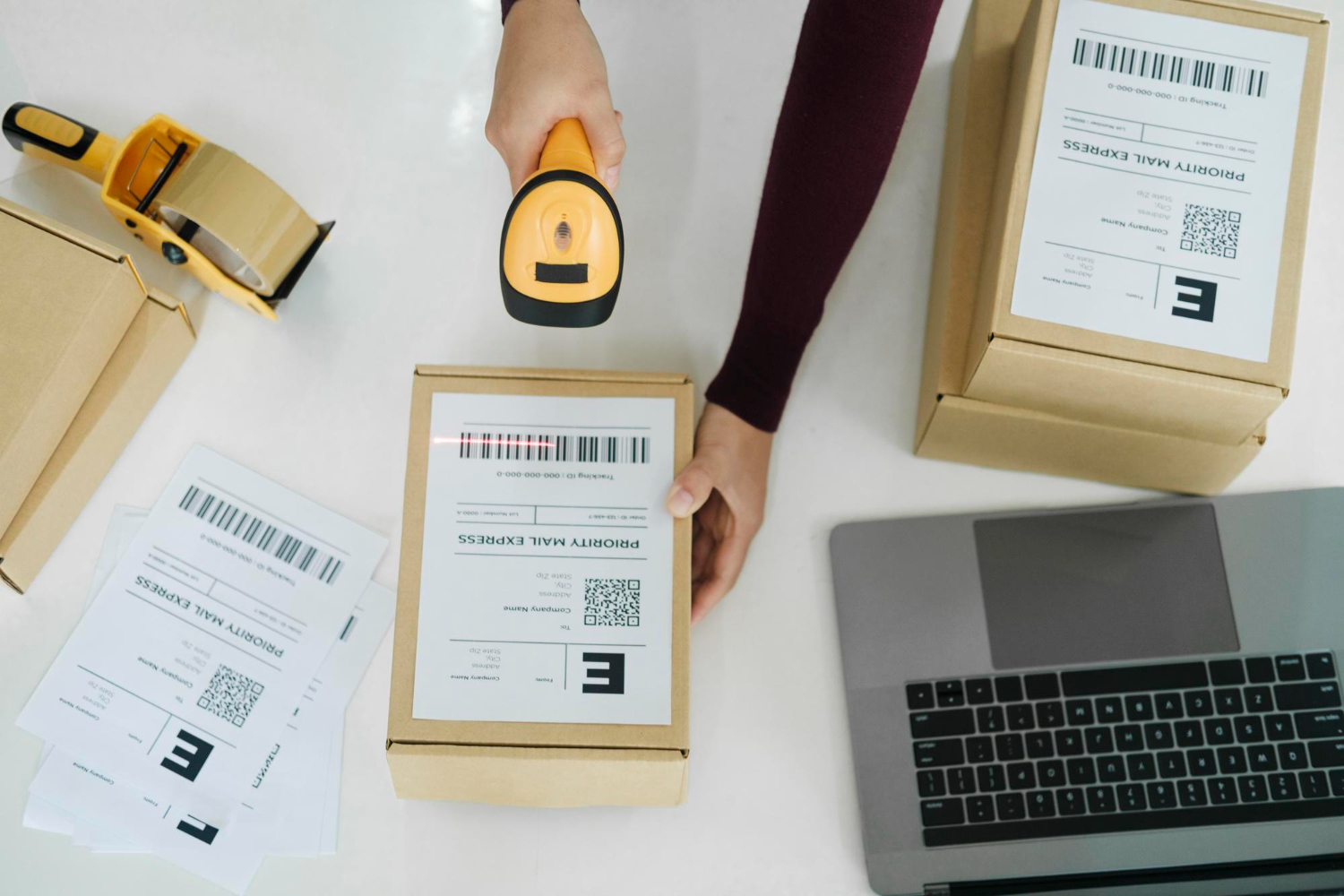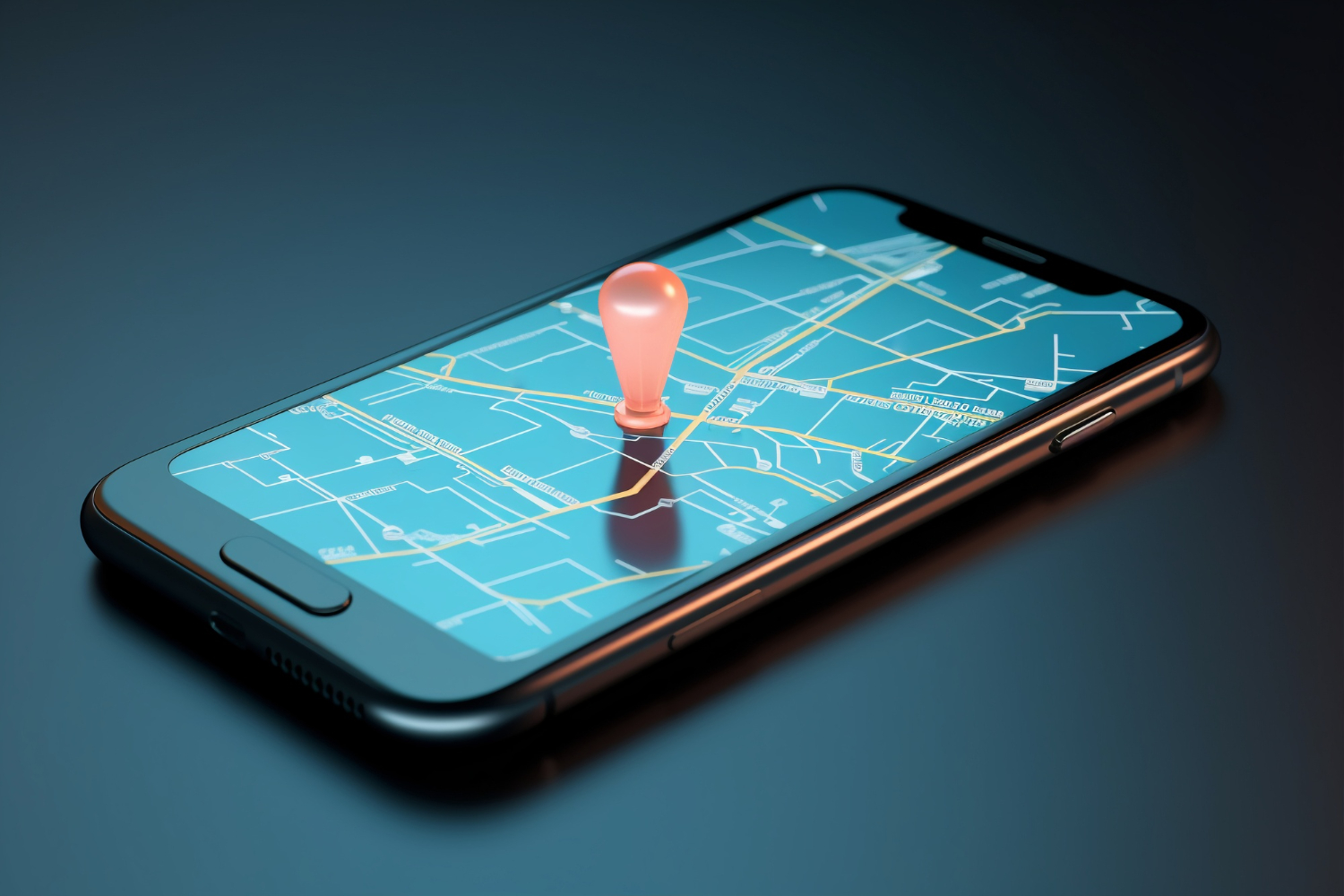
Asset tracking providers often present customers with two primary options: GPS technology or QR codes. These technologies frequently compete for market share, with many businesses unaware that they can serve similar functions. However, QR codes typically outperform GPS in versatility and functionality.
For businesses maintaining ICT asset registers or monitoring vehicle fleets, understanding the strengths and limitations of each system matters.
Let’s examine these technologies alongside newer options like RFID and NFC to help you make better decisions about asset management.
GPS Tracking Technology Explained
GPS has become commonplace for drivers navigating unfamiliar routes. This satellite-based technology constantly transmits signals to your device, pinpointing your exact location. For asset tracking, GPS functions similarly by showing where specific items are located.
An interesting historical note: GPS was first developed for military applications before becoming available for civilian and commercial use.
Companies typically deploy GPS tracking for vehicle fleets, though many organisations also use it to monitor warehouse assets that move between locations. For complete information about managing physical business property, our guide on Fixed Assets provides valuable insights.
GPS for Business Asset Tracking
GPS tracking offers several distinct advantages for business asset management:
- Real-time monitoring: GPS provides location data without requiring staff intervention, reducing human error while enabling 24/7 surveillance.
- Geographic precision: Modern GPS systems achieve accuracy within 3-5 meters, sufficient for most commercial applications.
- Theft recovery: According to insurance industry data, the ability to track stolen equipment improves recovery rates by up to 85%.
- Movement history: Most GPS platforms store historical movement data, allowing businesses to analyse usage patterns and optimise asset deployment.
- Geofencing capabilities: Companies can establish virtual boundaries that trigger alerts when assets leave designated areas, enhancing security protocols.

However, GPS technology brings notable limitations for comprehensive asset management:
- Update frequency constraints: Standard business GPS systems refresh every 10-15 minutes, creating blind spots in high-speed movement scenarios.
- Battery dependency: Active GPS trackers require power sources, necessitating regular maintenance or charging cycles.
- Signal interference issues: GPS performance deteriorates inside buildings, underground locations, or areas with heavy concrete or metal infrastructure.
- Implementation costs: Quality GPS hardware typically costs $50-300 per unit plus ongoing subscription fees ranging from $10-25 monthly per device.
- Size and attachment challenges: GPS trackers remain too bulky for smaller assets and require secure mounting systems to prevent removal.
- Limited data capacity: Unlike tag-based alternatives, GPS primarily delivers location data without storing extensive asset details.
These constraints explain why many operations managers complement GPS with alternative asset tracking tags that address these limitations. For stationary assets or equipment housed primarily indoors, passive tracking systems often deliver better value and functionality.
QR Code Technology
QR (Quick Response) codes resemble traditional barcodes but store significantly more information in their square matrix pattern. Nearly any smartphone or tablet can scan and interpret QR codes within seconds, making them highly accessible.
QR codes have quietly integrated into daily life—restaurants place them on tables for digital menus, theatres use them for seat-based ordering, and marketers embed them in advertisements for instant website access.
Like GPS, QR codes help monitor asset registers and track locations. However, they offer expanded functionality beyond simple location data. For those building IT equipment inventories, What is an IT Asset Register? explains key implementation concepts.
QR Codes in Practice
For businesses implementing QR code asset management, several key advantages emerge:
- Information density: A single QR code can store up to 4,296 alphanumeric characters, enabling comprehensive asset profiles including serial numbers, purchase dates, warranty information, maintenance histories, and responsible departments.
- Cost efficiency: QR labels cost between $0.05 and $0.30 per unit with no recurring fees, representing 70-95% cost savings compared to active tracking technologies.
- Implementation simplicity: Deployment requires minimal technical expertise—standard label printers generate QR codes that attach via adhesive backing or cable ties.
- Device compatibility: Over 97% of modern smartphones can scan QR codes without additional hardware or specialised apps.
- Customisation options: Enterprise QR solutions allow for custom branding, colour-coding by department, and tamper-evident features.
- Dynamic updating: Cloud-connected QR systems enable real-time information updates without replacing physical tags.
Integration capabilities: Modern QR systems integrate with ERP, CMMS, and accounting software through standard APIs, creating unified data ecosystems.

However, QR technology presents several notable limitations:
- Scan dependency: QR codes remain passive—they require manual scanning rather than automatically broadcasting locations.
- Line-of-sight requirement: Tags must be visible and accessible to be scanned, which can be challenging for assets in hard-to-reach locations.
- Environmental vulnerabilities: Standard QR labels can degrade from UV exposure, abrasion, or harsh chemicals, though industrial-grade options mitigate this issue.
- Security considerations: Public QR codes can be replaced or duplicated without sophisticated tampering detection, creating potential security vulnerabilities.
- Process reliance: Effectiveness depends entirely on consistent scanning protocols and staff compliance.
- Location triangulation limits: Without supplementary technologies, QR codes cannot provide autonomous location data.
To address these limitations, many organisations implement hybrid systems where QR codes work alongside checkpoint scanners at entry/exit points or integrate with Wi-Fi positioning systems for approximate indoor location data. This approach balances QR’s information richness with improved location awareness without the full cost of active GPS or RFID asset tags.
RFID and NFC: Advanced Asset Tracking Alternatives
RFID vs NFC technologies represent sophisticated alternatives to traditional tracking methods, each with distinct operational characteristics:
RFID Technology Specifications
RFID asset tags operate through radio frequency identification in three primary frequency ranges:
- Low Frequency (LF, 125-134 kHz): 10cm read range, slower data transmission, excellent performance around metals and liquids, commonly used for animal tracking and access control
- High Frequency (HF, 13.56 MHz): 10-30cm read range, moderate data speeds, used extensively in library books, pharmaceuticals, and payment cards
- Ultra-High Frequency (UHF, 856-960 MHz): 3-15m read range, fastest data transmission, susceptible to interference from liquids and metals, widely deployed in supply chain tracking and retail inventory
RFID implementation offers distinct advantages:
- Batch scanning capability: A single reader can simultaneously capture 200+ tags per second, reducing inventory time by up to 95% compared to barcode methods
- Non-line-of-sight reading: Tags function even when covered, dirty, or embedded within products
- Durability: Industrial-grade tags withstand temperatures from -40°F to 400°F, chemical exposure, and mechanical stress
- Data security: Enterprise RFID systems employ encryption standards like AES-128 to prevent unauthorised access
- Automated inventory: Fixed RFID portals at entry/exit points create autonomous tracking without human intervention
Hardware costs present the primary barrier to RFID adoption:
- Tag costs: $0.10-$0.50 for passive paper tags; $2-$25 for hardened industrial tags
- Reader costs: $500-$2,000 for handheld units; $1,500-$5,000 for fixed portal readers
- Infrastructure costs: Enterprise implementations typically require middleware ($5,000-$25,000) plus integration services
NFC Technology Applications
NFC asset tracking represents a specialised subset of HF RFID technology operating at precisely 13.56 MHz with distinct characteristics:
- Ultra-short read range: 4-10cm maximum, providing inherent security through proximity requirements
- Bi-directional communication: Unlike standard RFID, NFC permits two-way information exchange
- Peer-to-peer capability: NFC devices can communicate directly with each other
- Energy harvesting: Passive NFC tags operate without batteries, harvesting power from the reading device
- Standardised protocol: ISO/IEC 14443 standardisation ensures interoperability across manufacturers
Industrial asset tracking NFC systems excel in specific applications:
- High-value item authentication: Medical devices, luxury goods, and critical components
- Secure access management: Server rooms, equipment lockouts, and controlled areas
- Calibration verification: Testing equipment, measuring instruments, and regulated devices
- Maintenance validation: Critical infrastructure requiring proof of service completion
- Digital twin connectivity: NFC tags serve as physical anchors to digital twin databases
Organisations increasingly deploy hybrid systems combining RFID and QR code technologies to balance cost and capability:
- Public-facing QR codes: For customer or vendor interaction
- Internal RFID tags: For operational efficiency and automation
- NFC touchpoints: For authentication and secure access
Implementation considerations for RF-based tracking systems include:
- RF interference mapping: Professional site surveys identify potential dead zones
- Data architecture planning: Determining optimal on-premises vs. cloud-based data storage
- Read point optimisation: Strategic reader placement for maximum coverage
- Software integration: Connecting RF data streams with existing business systems
- Compliance verification: Ensuring radio frequency regulatory compliance across operating regions
For organisations handling a diverse portfolio of assets across multiple environments, our comprehensive guide, All You Need to Know About RFID Asset Tracking, provides detailed implementation strategies and ROI calculations.

Why Many Businesses Choose QR Codes
QR codes offer practical advantages for many business situations. They provide comprehensive asset tracking capabilities for ICT registers and other inventory systems. The ability to link unlimited information to each asset while maintaining accessibility through standard mobile devices makes them particularly attractive.
Application simplicity represents another major benefit—QR code tags attach easily to virtually any asset type. Many providers allow custom branding with company logos, enhancing visual identification. These practical advantages explain the growing preference for QR-based systems among operations managers across industries. For implementation guidance, asset tracking with easy provides step-by-step instructions.
Want expert advice about building an ICT asset register with QR technology? Contact our team directly at team@itemit.com.

Try itemit
Choose a better way to track
your assets.
Start your free 14-day trial now!

Keep Learning
itemit Blog
Tips, guides, industry best practices, and news.
Track Your Agricultural Assets With RFID Tags
Discover how RFID technology enhances agriculture management with better inventory tracking, livestock monitoring, and operational efficiency, even for small farms.
Which Is Better? RFID Tags Or Barcodes?
Is RFID asset tracking better than using barcodes or is it vice versa? Read this post now to discover which option is ideal for you!
The Future Of Asset Tracking Involves RFID Tags: Here’s Why
Find out exactly why the future of asset tracking in the workplace involves RFID asset tracking by reading this article now!


